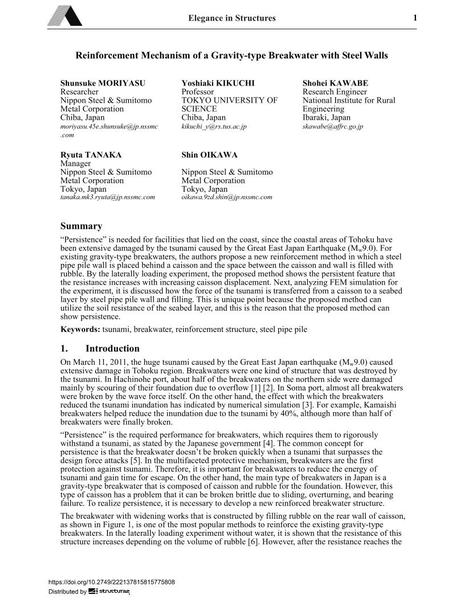Reinforcement Mechanism of a Gravity-type Breakwater with Steel Walls

|
|
|||||||||||
Détails bibliographiques
| Auteur(s): |
Shunsuke Moriyasu
Yoshiaki Kikuchi Shohei Kawabe Ryuta Tanaka Shin Oikawa |
||||
|---|---|---|---|---|---|
| Médium: | papier de conférence | ||||
| Langue(s): | anglais | ||||
| Conférence: | IABSE Conference: Elegance in structures, Nara, Japan, 13-15 May 2015 | ||||
| Publié dans: | IABSE Conference Nara 2015 | ||||
|
|||||
| Page(s): | 446-447 | ||||
| Nombre total de pages (du PDF): | 8 | ||||
| Année: | 2015 | ||||
| DOI: | 10.2749/222137815815775808 | ||||
| Abstrait: |
"Persistence" is needed for facilities that lied on the coast, since the coastal areas of Tohoku have been extensive damaged by the tsunami caused by the Great East Japan Earthquake (Mw9.0). For existing gravity-type breakwaters, the authors propose a new reinforcement method in which a steel pipe pile wall is placed behind a caisson and the space between the caisson and wall is filled with rubble. By the laterally loading experiment, the proposed method shows the persistent feature that the resistance increases with increasing caisson displacement. Next, analyzing FEM simulation for the experiment, it is discussed how the force of the tsunami is transferred from a caisson to a seabed layer by steel pipe pile wall and filling. This is unique point because the proposed method can utilize the soil resistance of the seabed layer, and this is the reason that the proposed method can show persistence. |
||||
| Mots-clé: |
brise-lames
|
||||
